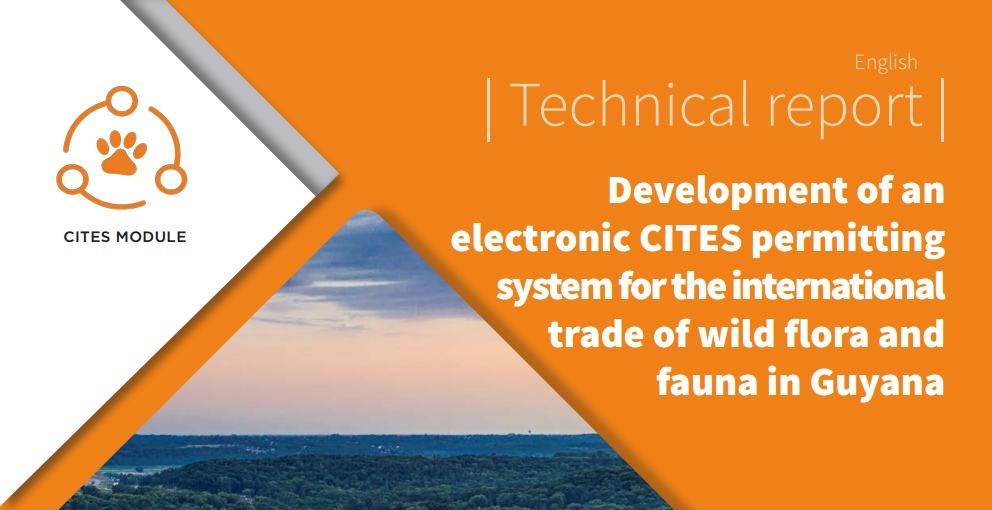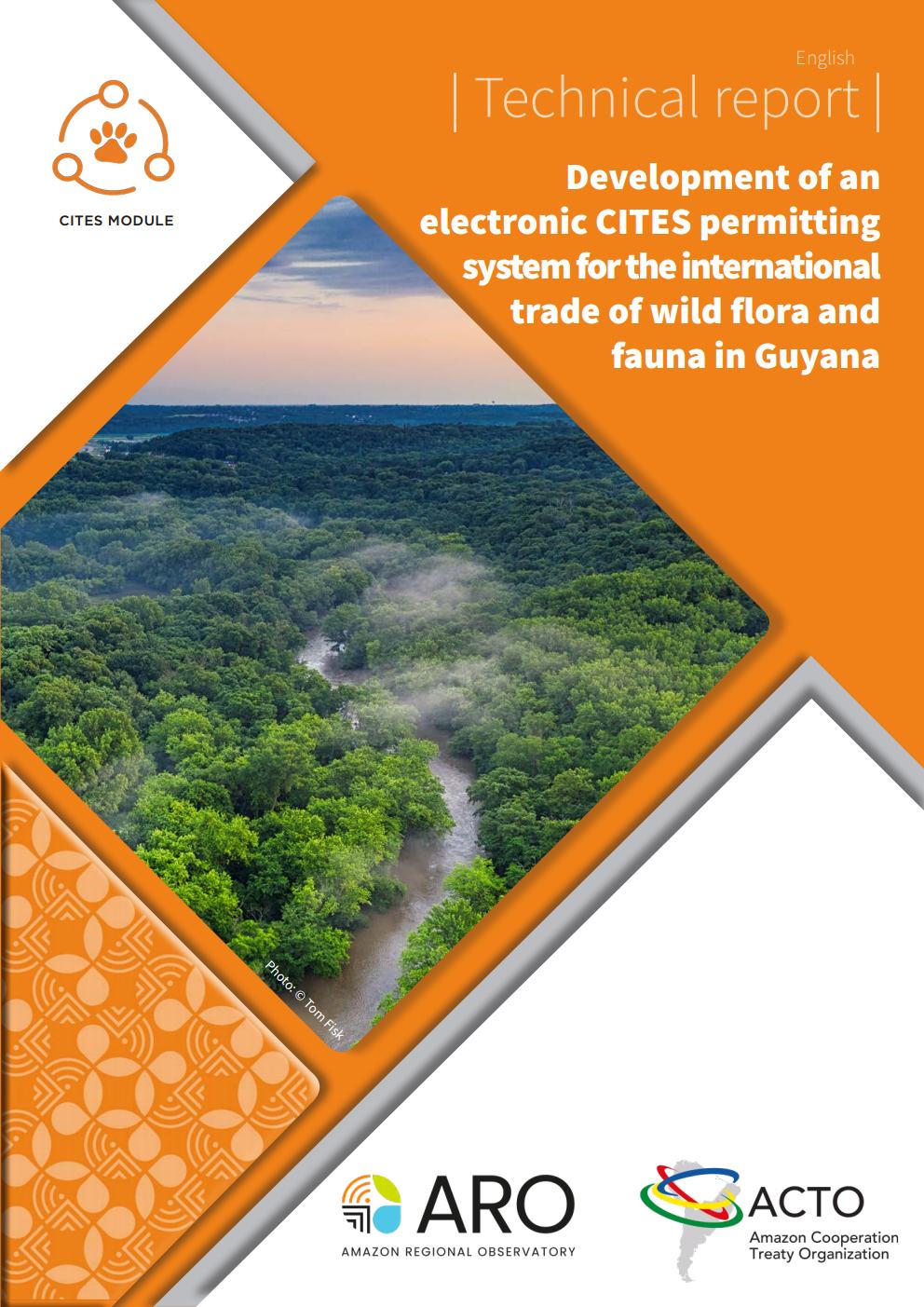Technical Report Development of an electronic CITES permitting system for the international trade of wild flra and fauna in Guyana

Nov 21, 2022 | ACTO | ARO | Bioamazon Project | Guyana

The Amazon Cooperation Treaty Organization (ACTO) is pleased to present the results of consultancies and technical studies carried out within the scope of its Regional Project for the Management, Monitoring and Control of Species of Wild Fauna and Flora Threatened by Trade (Bioamazon Project), in the format of the publications of the Amazon Regional Observatory (ARO).
In this Technical Report “Development of an electronic CITES permitting system for the international trade of wild flora and fauna in Guyana”, developed for the Guyana Wildlife Conservation and Management Commission (GWCMC), one will fid out how an end-to-end digital solution for managing the processes around the Import/Export of endangered species, including those protected under the Convention on International Trade in Endangered Species of Wild Fauna and Flora (CITES) was created.
As part of the new CITES system, developed with the help of the consultancy of cBrain, an integration was created to allow the Amazon Regional Observatory (ARO) to receive relevant data from the database to support constant communication around the type of species, quantity, appendix, etc. exported, allowing for more accurate national monitoring on endangered species’ trade in Guyana and in the wider Amazon Region.
The project was characterized by a constructive and positive synergy between the GWCMC and cBrain, where it became apparent that numerous benefis could be achieved through the transformation of Guyana’s current CITES process with the use of new digital tools. These tools were provided using the 100% standard platform F2, which was confiured and adapted to match the local requirements of the country.
As a result of this project, which lasted nine months (August 2021 – April 2022), the GWCMC now benefis from a brand new CITES softare system, which will improve staf productivity, transparency and visibility of species quotas, and conservation outcomes.
Finally, we hope the contribution of this Technical Report to the knowledge management will inspire other institutions and countries to improve their practices in implementing CITES Convention on the Amazon Region.
You can download the complete file by clicking here
